BMW X5 vs Land Rover Range Rover Sport – ¿Qué coche se adapta mejor a ti?
Compara de un vistazo rendimiento, maletero, consumo y precio.
Descubre ahora cuál es la mejor elección para ti – BMW X5 o Land Rover Range Rover Sport.
Battle of the Titans: BMW X5 vs. Land Rover Range Rover Sport
In the realm of luxury SUVs, few match the prowess and prestige of the BMW X5 and the Land Rover Range Rover Sport. Both vehicles showcase the pinnacle of automotive craftsmanship, blending cutting-edge technology with unsurpassed comfort. Let's delve into an in-depth comparison of these two behemoths to see how they stack up against each other in terms of design, performance, and innovation.
Design and Dimensions
The BMW X5 exudes a sleek yet muscular presence, with dimensions defining its robust stature. The X5 stretches between 4935 mm and 4948 mm in length, with a width up to 2015 mm, and a height variance between 1755 mm and 1765 mm. Its trunk is generous, offering between 500 and 650 liters of storage, catering to practical needs without compromising luxury or comfort.
The Land Rover Range Rover Sport, on the other hand, spells elegance with its slightly more extended length ranging from 4946 mm to 4970 mm and a wider stance at 2043 mm. Its height is distinguished at around 1814 mm to 1820 mm, creating a more imposing presence. With a trunk capacity of 647 liters, it adeptly balances functionality with style.
Power and Performance
The BMW X5 is no slouch in the power department, available with a variety of powertrains ranging from 298 HP to an impressive 625 HP. It provides a flexible choice between diesel, petrol, and plug-in hybrid engines, each paired with an automatic gearbox for that trademark smooth drive. The top-of-the-line variant achieves 0-100 km/h in a blazing 3.9 seconds and a maximum speed of 250 km/h, showcasing its sporty DNA.
The Range Rover Sport is equally competitive, offering a range of outputs from 249 HP to a formidable 635 HP. Like its competitor, it also offers diverse engine types, including diesel MHEV, plug-in hybrids, and potent petrol engines. The Range Rover Sport can accelerate from 0-100 km/h in a swift 3.9 seconds and matches the X5's top speed of 250 km/h, underscoring its sporting pedigree.
Innovative Technology
Technology and innovation are cornerstones for both SUVs. The BMW X5 boasts a sophisticated suite of technologies, including advanced driver assistance systems and a user-friendly infotainment system. The plug-in hybrid model shines with a 97 km electric range and a sizable 25.7 kWh battery, enhancing its eco-friendly credentials.
The Range Rover Sport excels with an even more extensive electric-only range of up to 122 km from its larger 31.8 kWh battery. Its state-of-the-art infotainment and safety technologies ensure a blend of luxury with peace of mind, making every journey a pleasure rather than a chore.
Efficiency and Sustainability
In terms of fuel consumption, both SUVs offer competitive numbers. The BMW X5 displays impressive efficiency, with fuel consumption as low as 0.9 L/100km for the plug-in hybrid model and CO2 emissions beginning at just 21 g/km. This aligns with discerning buyers who are conscious of their carbon footprint.
The Range Rover Sport offers similar efficiency, with plug-in hybrid models consuming only 0.7 L/100 km and emitting just 16 g/km of CO2, reflecting Land Rover's commitment to sustainability and reducing environmental impact.
Conclusion
Choosing between the BMW X5 and the Land Rover Range Rover Sport is no easy task. Each offers a unique blend of power, luxury, and innovation that appeals to different facets of the modern driver. The BMW X5 stands out with its agile performance and cutting-edge tech features, while the Range Rover Sport blends unrivaled sophistication with advanced sustainability credentials. Ultimately, the choice depends on the specific needs and desires of the luxury SUV connoisseur.
Aquí vienen los hechos: las diferencias técnicas en detalle
Costes y consumo: Al comparar precio y eficiencia suelen verse las mayores diferencias. Así se descubre cuál encaja mejor en el presupuesto a largo plazo.
BMW X5 tiene una ventaja casi imperceptible en precio: parte desde 98900 €, mientras que el Land Rover Range Rover Sport cuesta 102300 €. La diferencia es de unos 3397 €.
También se aprecia una diferencia en el consumo: el BMW X5 gasta 0.80 L y es significativo más eficiente que el Land Rover Range Rover Sport, que consume 2.70 L. La diferencia es de unos 1.90 L cada 100 km.
En autonomía, el Land Rover Range Rover Sport ofrece un rendimiento en pequeña medida mejor: alcanza hasta 118 km, unos 13 km más que el BMW X5.
Motor y rendimiento: Debajo del capó se descubre qué modelo tiene un carácter más deportivo y quién acelera mejor.
En cuanto a potencia, el Land Rover Range Rover Sport tiene una ventaja casi imperceptible: 635 HP frente a 625 HP. Eso supone un aumento de unos 10 HP CV.
En aceleración de 0 a 100 km/h, el Land Rover Range Rover Sport es apenas perceptible más rápido: 3.80 s frente a 3.90 s. Es aproximadamente 0.10 s más veloz.
En velocidad máxima, el Land Rover Range Rover Sport es en pequeña medida superior – alcanza 290 km/h, mientras que el BMW X5 se queda en 250 km/h. La diferencia es de unos 40 km/h.
También hay diferencias en el par motor: el Land Rover Range Rover Sport empuja mínimo con 800 Nm frente a 750 Nm. La diferencia ronda los 50 Nm.
Espacio y practicidad: Más allá del rendimiento, el confort y el espacio interior son clave. Aquí se decide cuál es más práctico y versátil.
Ambos modelos ofrecen espacio suficiente para 5 personas.
En peso en vacío, el BMW X5 es apenas perceptible más ligero – 2240 kg frente a 2390 kg. La diferencia ronda los 150 kg.
En capacidad de maletero, el BMW X5 ofrece casi imperceptible más espacio – 650 L frente a 647 L. La diferencia es de unos 3 L.
En capacidad máxima de carga, el BMW X5 es evidente mejor – hasta 1870 L, unos 379 L más que el Land Rover Range Rover Sport.
En capacidad de carga útil, el Land Rover Range Rover Sport algo se impone – 830 kg frente a 705 kg. La diferencia es de unos 125 kg.
En general, el BMW X5 se muestra es claramente superior y se lleva el título de DriveDuel Champion.
Destaca por su equilibrio general y por ser el compañero más versátil en el día a día.
BMW X5
El BMW X5 destaca en el segmento de los SUV de lujo por su elegancia y confort. Su interior combina materiales de alta calidad con tecnología avanzada, ofreciendo una experiencia de conducción excepcional. Además, su dinámica de manejo y capacidades off-road lo convierten en una opción versátil para los amantes de la aventura y la sofisticación.
detalles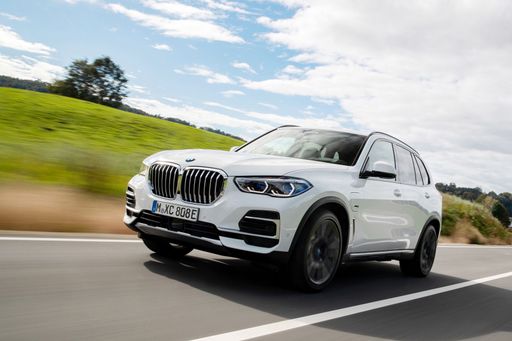 @ press.bmwgroup.com
@ press.bmwgroup.com
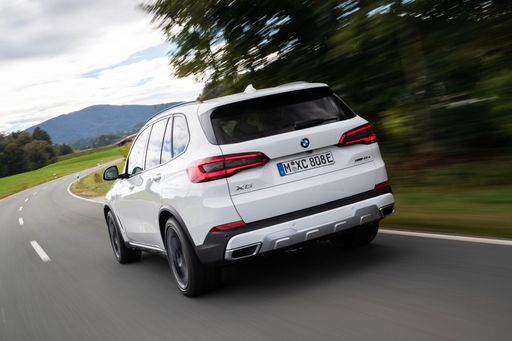 @ press.bmwgroup.com
@ press.bmwgroup.com
 @ press.bmwgroup.com
@ press.bmwgroup.com
 @ press.bmwgroup.com
@ press.bmwgroup.com
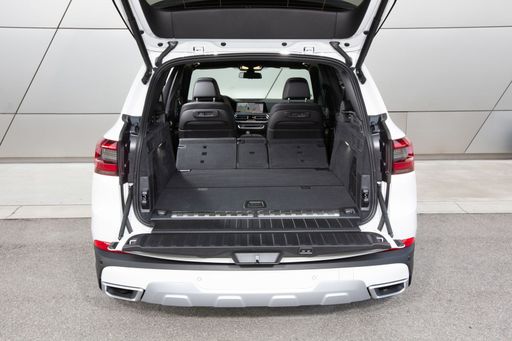 @ press.bmwgroup.com
@ press.bmwgroup.com
Land Rover Range Rover Sport
El Range Rover Sport ha establecido un nuevo estándar en el mundo de los SUV de lujo, combinando elegancia y robustez en su diseño. Con un interior refinado y tecnología de vanguardia, ofrece una experiencia de conducción inigualable tanto en carretera como fuera de ella. Su potente rendimiento y características versátiles lo convierten en la elección perfecta para quienes buscan aventura sin sacrificar el confort.
detalles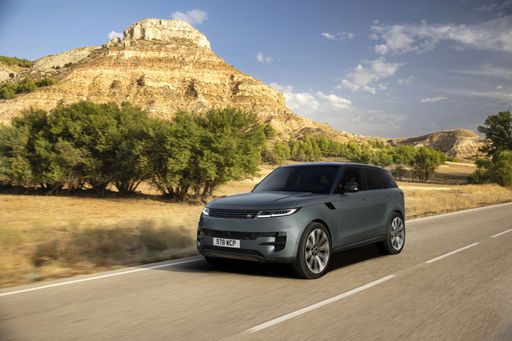 @ media.landrover.com
@ media.landrover.com
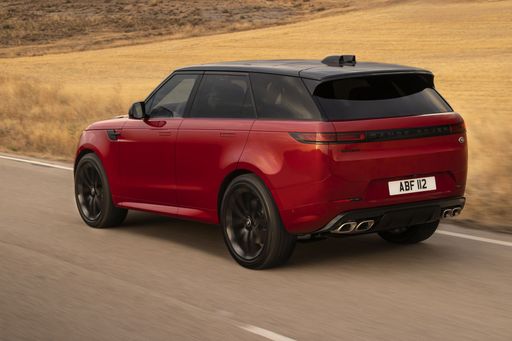 @ media.landrover.com
@ media.landrover.com
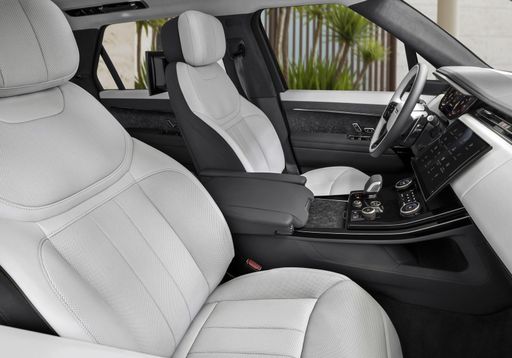 @ media.landrover.com
@ media.landrover.com

|

|
|
|
|
Costos y consumo |
|
|---|---|
|
Precio
98900 - 195300 €
|
Precio
102300 - 239200 €
|
|
Consumo L/100km
0.8 - 12.8 L
|
Consumo L/100km
2.7 - 11.7 L
|
|
Consumo kWh/100km
-
|
Consumo kWh/100km
-
|
|
Autonomía eléctrica
105 km
|
Autonomía eléctrica
116 - 118 km
|
|
Capacidad de la batería
25.70 kWh
|
Capacidad de la batería
31.80 kWh
|
|
co2
19 - 289 g/km
|
co2
61 - 266 g/km
|
|
Capacidad del tanque
69 - 83 L
|
Capacidad del tanque
71 - 90 L
|
Dimensiones y carrocería |
|
|---|---|
|
Tipo de carrocería
SUV
|
Tipo de carrocería
SUV
|
|
Asientos
5
|
Asientos
5
|
|
Puertas
5
|
Puertas
5
|
|
Peso en vacío
2240 - 2495 kg
|
Peso en vacío
2390 - 2810 kg
|
|
Capacidad del maletero
500 - 650 L
|
Capacidad del maletero
647 L
|
|
Longitud
4935 - 4948 mm
|
Longitud
4946 - 4970 mm
|
|
Anchura
2004 - 2015 mm
|
Anchura
2043 mm
|
|
Altura
1755 - 1765 mm
|
Altura
1814 - 1820 mm
|
|
Capacidad máxima del maletero
1720 - 1870 L
|
Capacidad máxima del maletero
1491 L
|
|
Capacidad de carga
565 - 705 kg
|
Capacidad de carga
640 - 830 kg
|
Motor y rendimiento |
|
|---|---|
|
Tipo de motor
Híbrido enchufable, Híbrido ligero gasolina, Híbrido ligero diésel
|
Tipo de motor
Híbrido enchufable, Híbrido ligero gasolina, Híbrido ligero diésel
|
|
Transmisión
Automática
|
Transmisión
Automática
|
|
Detalle de transmisión
Caja automática
|
Detalle de transmisión
Caja automática
|
|
Tipo de tracción
Tracción total
|
Tipo de tracción
Tracción total
|
|
Potencia HP
298 - 625 HP
|
Potencia HP
249 - 635 HP
|
|
Aceleración 0-100km/h
3.9 - 6.1 s
|
Aceleración 0-100km/h
3.8 - 7.7 s
|
|
Velocidad máxima
233 - 250 km/h
|
Velocidad máxima
206 - 290 km/h
|
|
Par motor
540 - 750 Nm
|
Par motor
570 - 800 Nm
|
|
Número de cilindros
6 - 8
|
Número de cilindros
6 - 8
|
|
Potencia kW
219 - 460 kW
|
Potencia kW
183 - 467 kW
|
|
Cilindrada
2993 - 4395 cm3
|
Cilindrada
2997 - 4395 cm3
|
General |
|
|---|---|
|
Año del modelo
2023 - 2025
|
Año del modelo
2025
|
|
Clase de eficiencia de CO2
B, G
|
Clase de eficiencia de CO2
B, G
|
|
Marca
BMW
|
Marca
Land Rover
|
¿El BMW X5 se ofrece con distintas tracciones?
El BMW X5 está disponible con tracción Tracción total.
Los precios y datos mostrados son estimaciones basadas en los precios de lista en Alemania y pueden variar según el país. Esta información no es legalmente vinculante.
